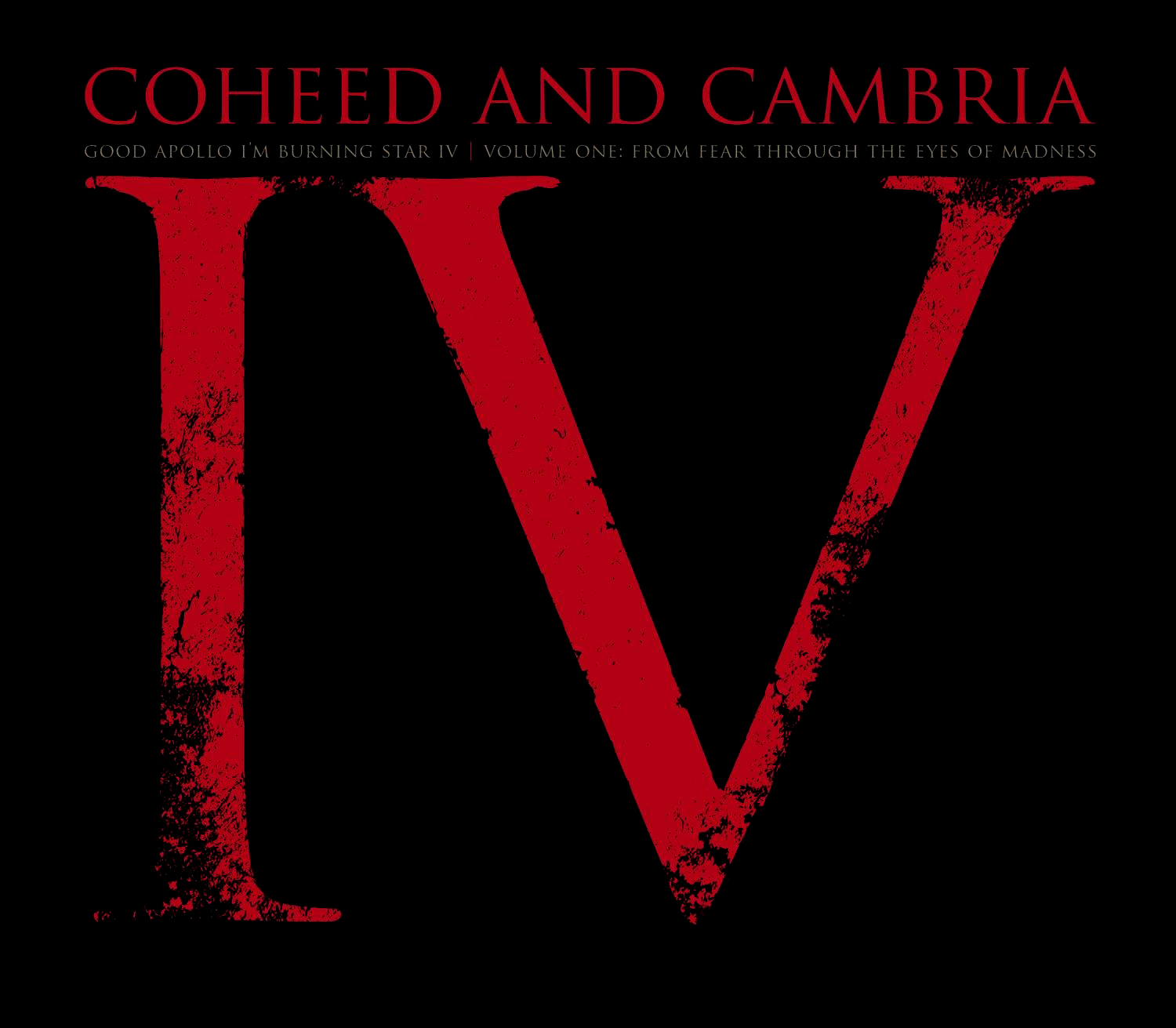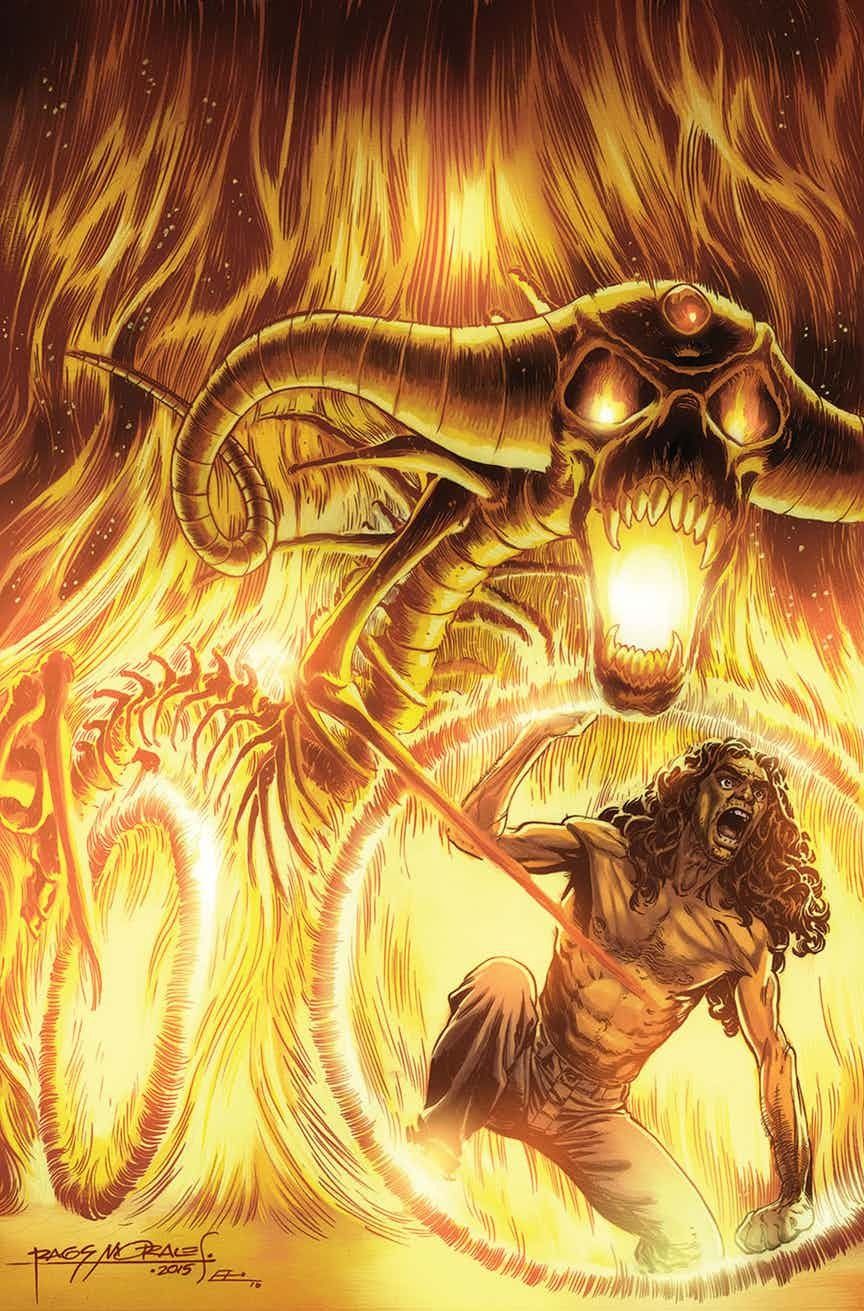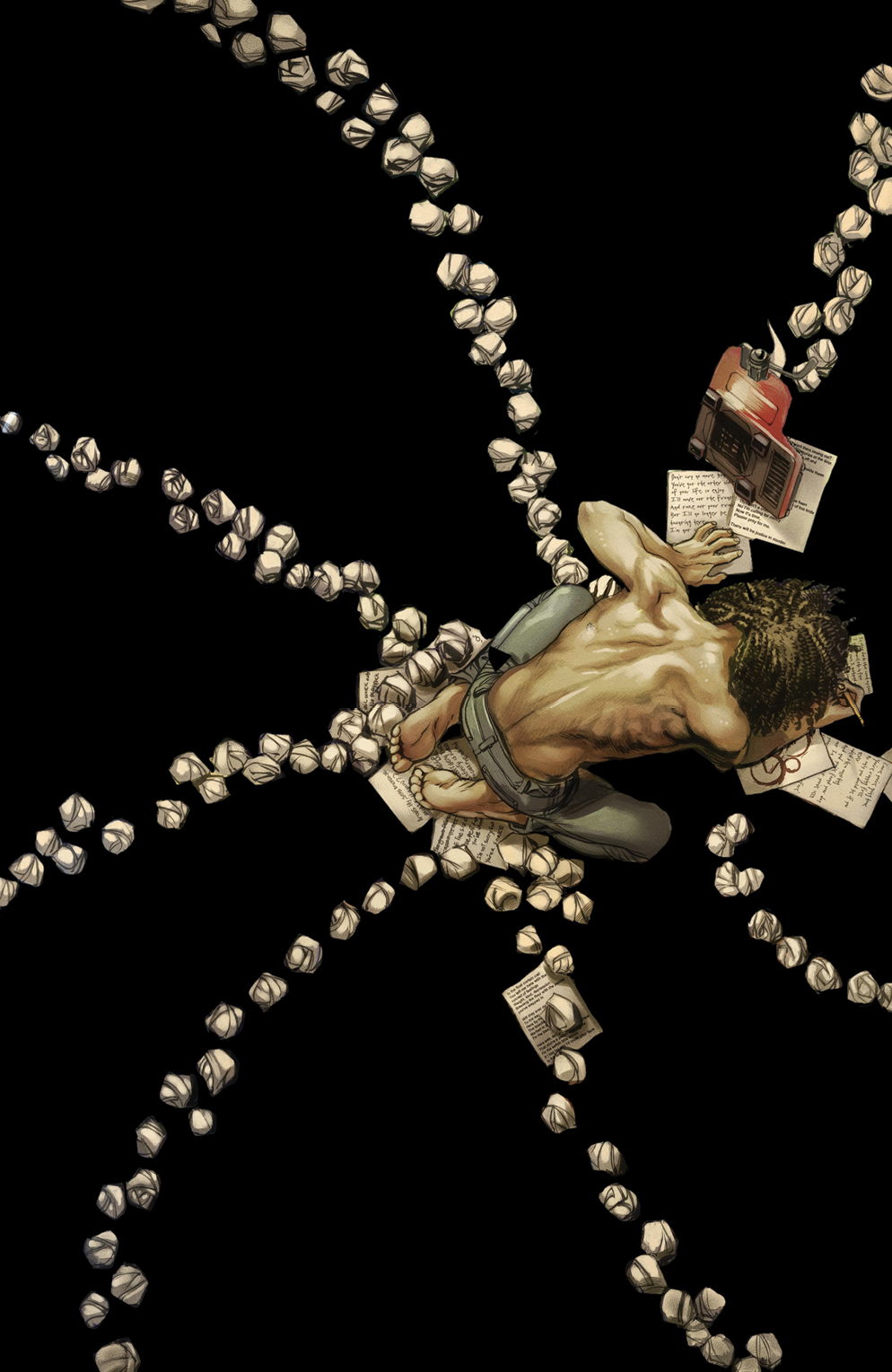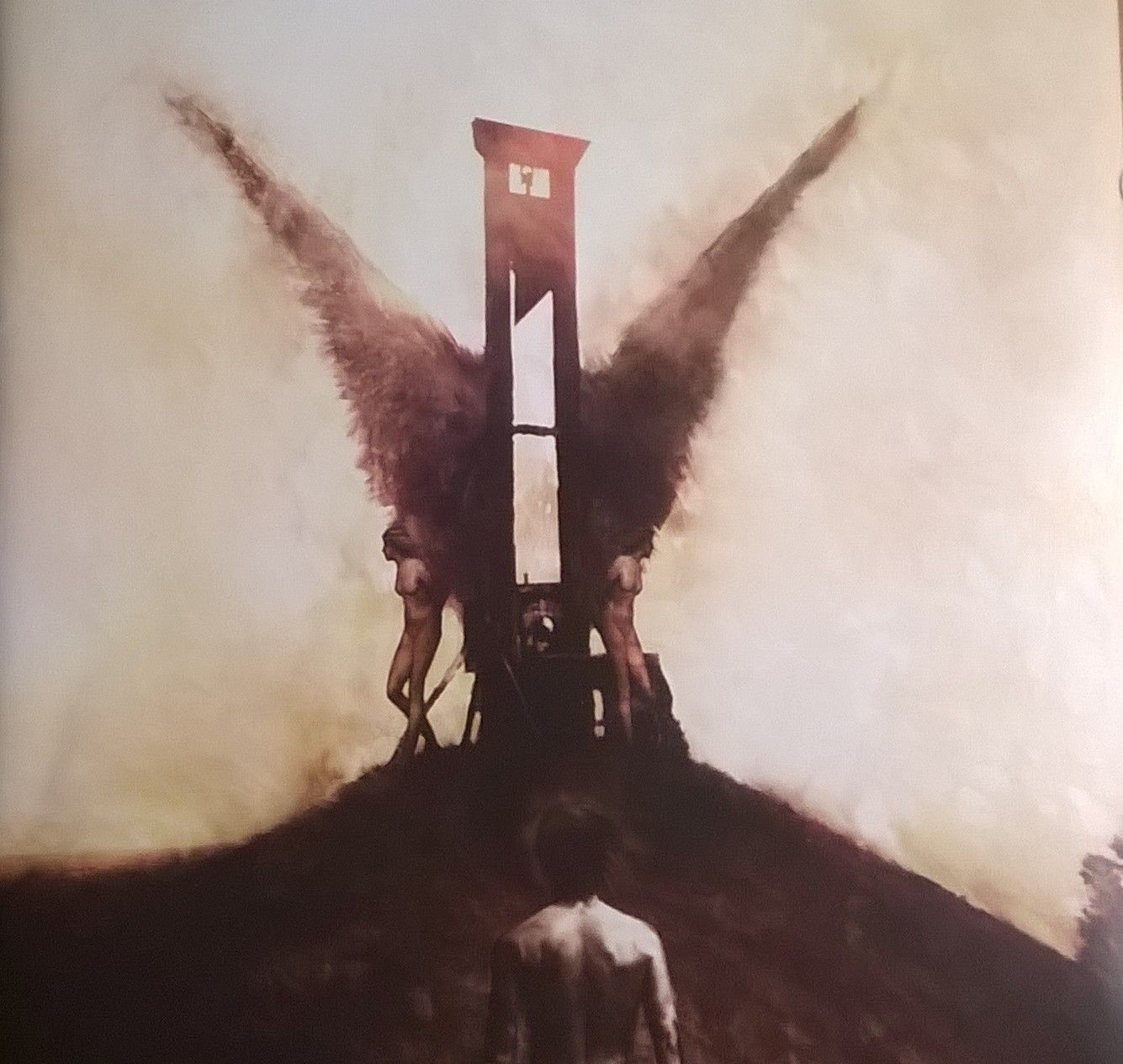Table of Contents Show
Coheed and Cambria’s prog-rock is for the coolest of the nerds. Even 15 years later, their third album, Good Apollo, I’m Burning Star IV, Volume One: From Fear Through the Eyes of Madness, is an exciting masterpiece of storytelling that focuses on delivering passionate music and lyrics worth analyzing. Good Apollo, I’m Burning Star IV, Volume One (my abbreviated title for the album) is the name of Coheed and Cambria’s music album as well as the comic book series that work together to tell the story. While I will focus on the lyrics from the album, I will still use the comics as a context for the lyrics because, true to Coheed and Cambria, the lyrics are poetic and include conversations between different characters.

This album is compelling because of Coheed and Cambria’s focus on creating a story with complex characters, like the Writer. Over the course of the album, the Writer descends further and further into insanity as he tries to solve his real-world problems with the fictional universe he created. Using Writer, Coheed and Cambria’s Good Apollo, I’m Burning Star IV, Volume One explores the all-consuming power of storytelling.
The Writer’s Motivation
Good Apollo, I’m Burning Star IV, Volume One takes place in two worlds: the Writer’s real world and Claudio’s fictional world. The Writer is the creator of the fictional world that Claudio, the Writer’s character, lives in. And up until this point in the Coheed and Cambria lore, these two worlds have remained separate. However, in the real world, the Writer unsuccessfully tries to get over his cheating ex-girlfriend, Erica Court, and he endures maddening hallucinations. Compelled by these visions and a need to end his story, the Writer has no choice but to combine the two worlds by entering his story.
The songs on the album primarily focus on the internal struggles of the Writer and his main character, Claudio. Coheed and Cambria’s songs about the Writer are primarily shrouded in insane ramblings about death and the end of his story as he tries to find closure. On the other hand, the songs about Claudio deal with his reluctance to accept his role as The Crowing (the one who will end life as they know it). After entering his fictional world, the Writer delves further and further into madness, and he frequently imagines himself killing Erica.

Eventually, his demonic ten-speed bicycle finally convinces him that killing the character Ambellina, Erica’s fictional likeness and Claudio’s love interest is in the Writer’s best interest. The Writer sees Ambellina as an obstacle to his happiness as she reminds him too much of Erica. Additionally, the Writer knows that killing Ambellina will bring about The Crowing that’s needed for the story to end.
The way the Writer sees it, Ambellina’s death is the only way for him to find closure and finally end the story. (( Wikipedia contributors. (2020, June 10). Good Apollo, I’m Burning Star IV, Volume One: From Fear Through the Eyes of Madness (comics). On Wikipedia, the Free Encyclopedia. Retrieved 02:18, June 17, 2020, from Wiki ))
Where Does The Story End & The Writer’s Reality Begin?
Throughout Coheed and Cambria’s album, the line separating the Writer’s reality in New York and his fictional world is blurry, especially when the Writer decides to physically enter his story to get the ending he wants. However, it is the reason why the Writer decides to venture into his story that really shows how blurred the line between his reality and created fiction has become. The Writer enters his story in order to use his fiction to “fix” his reality. He cannot seem to move on from Erica in his own world if her likeness continues to live in his stories, reminding him of what he lost.
In the song “The Lying Lies & Dirty Secrets of Miss Erica Court,” when ruminating about killing Ambellina, the Writer hesitates for a moment and says, “Am I killing you?” (( Coheed and Cambria, “The Lying Lies & Dirty Secrets of Miss Erica Court,” track 10 on Good Apollo, I’m Burning Star IV, Volume One: From Fear Through the Eyes of Madness, Equal Vision Records, 2005, compact disc. Records, 2005, compact disc. )) in reference to Erica. At this later point in the story, the Writer sees the influence his fiction has on his reality, and he questions if killing off Ambellina will also “kill off” Erica by destroying his last tie to her.

The Writer’s insanity is seen in his hyperfixation with death and in his anger over Erica’s betrayal. In one of the most popular Coheed and Cambria songs “Welcome Home,” the Writer says, “If you really loved me, you would’ve endured my world.” (( Coheed and Cambria, “Welcome Home,” track 3 on Good Apollo, I’m Burning Star IV, Volume One: From Fear Through the Eyes of Madness, Equal Vision Records, 2005, compact disc. )) The “you” is Erica, which suggests that Erica left him because he was too obsessed with his story; at least, that’s how the Writer chooses to understand it. It would make sense that Writer partially blames his story for Erica leaving, so he would want that story to end so it no longer acts as a constant reminder of Erica.
While the Writer’s need to kill some version of Erica is a crazy, unhealthy, and violent way to bring about closure, it is the Writer’s misguided attempt at achieving the catharsis that writing often offers. It demonstrates the power of storytelling because as pieces of the author become part of the story, the author becomes intimately bound to it. For the Writer, killing Ambellina works for him, mostly because he’s crazy, but also because storytelling, no matter what fictional world it’s set in, never completely loses its connection to the writer and their reality.
The Story Takes On A Life Of Its Own
As I’ve mentioned before, Coheed and Cambria made the Writer’s motivations complex. He kills Ambellina not only to find closure by killing off Erica’s likeness but also to end the story that drove Erica away in the first place. And while Writer deciding to enter his fiction is arguably an elaborate metaphor for the writing process, it also makes sense if taken literally. The Writer’s characters are so fully-developed and so human that the Writer seems to have no choice but to enter the story in order to regain control over his characters.
The Writer’s appearance in his fictional universe is also a testament to the nature of the depth of his characters — they really do stand on their own. Any other author would have just written the ending the way they wanted to, and that would have been the end of it. However, the Writer’s characters are not easily swayed, despite his position as God in his fictional universe, mostly because Claudio is so hesitant to become The Crowing. The Writer’s characters have become entities that exist outside of his mind as they have thoughts, feelings, and goals of their own.

In fact, the characters are so independent that when Writer physically enters the story to control the ending, Claudio fights him to try and save Ambellina. Claudio does not bow down in submission, but he defends the one he loves. Then, in the song “The Willing Well III: Apollo II: The Telling Truth,” after the Writer kills Ambellina and Claudio realizes that he must do the Writer’s bidding as The Crowing, Claudio still tells the Writer, “I will, in the now, hate you.” (( Coheed and Cambria, “The Willing Well III: Apollo II: The Telling Truth,” track 14 on Good Apollo, I’m Burning Star IV, Volume One: From Fear Through the Eyes of Madness, Equal Vision Records, 2005, compact disc. ))
Even when he knows he’s beaten, Claudio still makes his feelings very clear. The strength and humanity of the Writer’s characters speaks to the power of storytelling. While a story starts as a collection of ideas that then become words on a page, the fiction and its characters will eventually take on a life and an essence of their own. As the story becomes more and more autonomous, an author, just like the Writer (or maybe even Coheed and Cambria), can find themselves fighting with their characters to get the ending they want. The authors will always win in the end, but at what cost?
The Power Of Storytelling
Coheed and Cambria’s album Good Apollo, I’m Burning Star IV, Volume One is a dramatic and fantastical demonstration of the power of storytelling. From the Writer’s attachment to Ambellina to his fight for control over his own story, Coheed and Cambria highlight the internal struggles of an author driven mad by his own story. Even the Writer himself very clearly recognizes the power his fiction holds over him because he uses his story to try and fix his problems.
The Writer uses fiction to conquer his reality because he can’t do it on his own. By doing so, Coheed and Cambria blur the line between fiction and reality as the Writer decides to follow his demonic bicycle’s plan. One of the most important parts of this album is that Coheed and Cambria never reveal if the Writer achieved the closure that he sought. The Writer accomplished everything he set out to do, but he never seemed to achieve peace. And it’s quite possible that he never will. After all, the power of storytelling can be maddening if we let it go to our heads.

Great article. So many memories of such a great album.
I’m really glad you liked it! Thank you for reading!
*SPOILER ALERT TO ANYONE WHO HAS NOT READ THE COMICS DO NOT READ ANY FURTHER*
and to top off this complete mind-bend of a story, Ryder sees the police with their guns drawn as the red army and tries to fight them off but meets his demise… amazing, absolutely amazing way to end an epic story! this was an awesome article, great read.
What a great scene! Thanks for reading!
Great article! That’s one of my favorite albums and you did an exquisite job detailing the story behind it.
Thank you so much! That means a lot!
The ultimate prog-rock/space opera/break-up album, and my favorite album by my all-time favorite band! Would love to discuss more Amory Wars with the Writer of this article. She really knows her stuff 😀
I completely agree! And thank you for capitalizing “Writer”–what an honor!
Brilliant article. I always felt the conflict when listening to the lyrics, but I enjoyed reading it from your perspective. Thank you
I’m glad you enjoyed my take! It’s really an album worth thinking about!